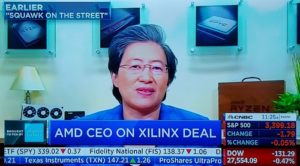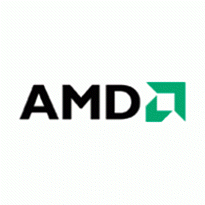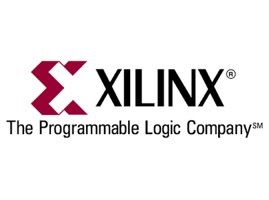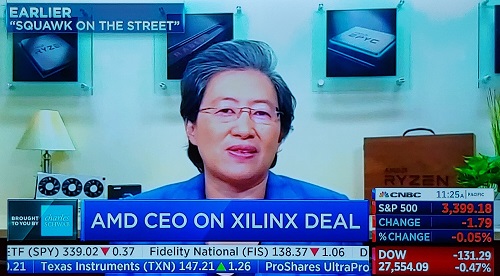
AMD CEO Lisa Su on CNBC
Marking a new phase in in the re-resurgence of AMD in its eternal struggle with Intel, and as reported here October 9, AMD has agreed to buy FPGA chip maker Xilinx, for $35 billion – another in a series of recent technology industry acquisitions with direct bearing on HPC.
“The acquisition brings together two industry leaders with complementary product portfolios and customers,” AMD said in its announcement. “AMD will offer the industry’s strongest portfolio of high performance processor technologies, combining CPUs, GPUs, FPGAs, Adaptive SoCs and deep software expertise to enable leadership computing platforms for cloud, edge and end devices. Together, the combined company will capitalize on opportunities spanning some of the industry’s most important growth segments from the data center to gaming, PCs, communications, automotive, industrial, aerospace and defense.”
The news was released simultaneously with a “beat and raise” AMD earnings announcement, which generated record revenue for the third quarter of $2.80 billion, operating income of $449 million and net income of $390 million. This exceeded earnings-per-share expectations by more than 15 percent and revenue projections by more than 9 percent. And the company upped its 2020 revenue growth expectations to approximately 41 percent compared to 2019, up from prior guidance of 32 percent.
Interviewed today by CNBC’s Jim Cramer about the acquisition, AMD CEO Lisa Su said, “What Xilinx brings is really very additive to the AMD model. First of all, it is immediately accretive upon closing, it brings up significant margin expansion, as well as profitability and free cash flow generation.
“But more importantly than that, we really believe that together we can define the future of high performance computing. And you know, I’m a very ambitious person, it’s all about what we can do to transform the industry, as well as participate in driving the next phase of computing. And that’s what Xilinx is all about. It’s a fabulous company, I would say it’s one of the best companies in the industry. It has very unique capabilities. And we are so complimentary, you really see that when we think about the product portfolios, the market segments that we’re in, and then culturally, we’re also very, very aligned as well. So it’s a very, very good day for AMD and we’re very excited about what we can do together with Xilinx.”

The Xilinx purchase, which still must pass regulatory approval in the U.S. and overseas, would be one of the largest in largest in the tech industry over the last decade. Nvidia last month announced plans to buy CPU maker Arm Holdings for $40 billion. Last year, IBM closed its $34 billion acquisition of Red Hat (biggest of all: Dell’s 2015 acquisition of EMC for $67 billion). Other recent M&A activity includes Nvidia’s acquisition earlier this year of high performance networking company Mellanox for $7 billion, and HPE’s $1.4 billion acquisition a year ago of supercomputing systems company Cray.
Intel, meanwhile, made its move into FPGAs in 2015 with the $17 billion purchase of Altera.




